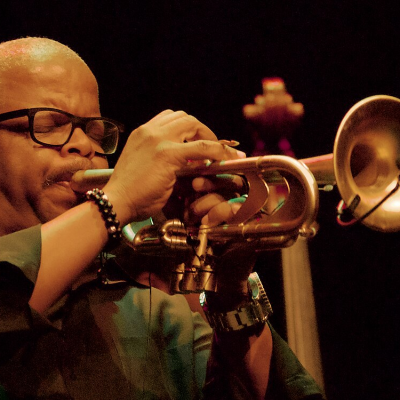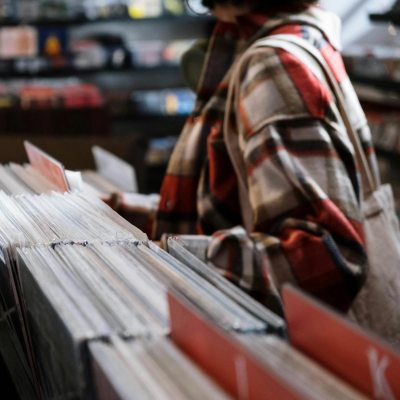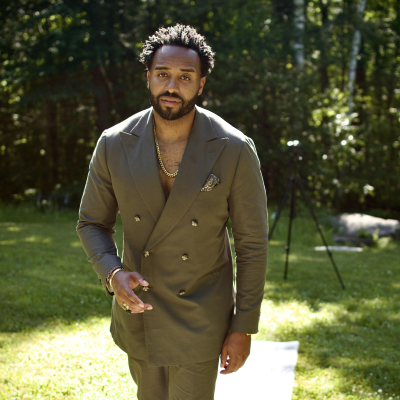Paul Morris is a graphic designer and writer who collects album art of the 1940’s and 1950’s. He finds his examples of influential mid-century design in the used record stores of Portland, Oregon.
This edition features teenagers of the 1950’s enjoying their music!
__________
This time I’ve brought some examples of 1950s album covers that attempted to appeal to the growing youth market. What I love about these James Dean-era photos is how square the youngsters appear, and how old the models often were. In this teenage dance party one girl is having some finger-snapping fun.
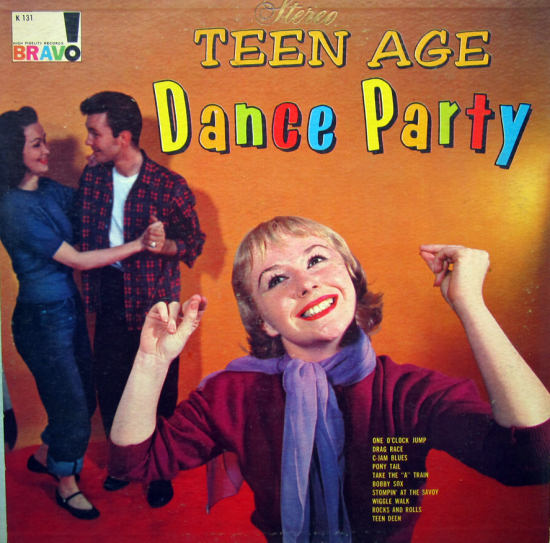
__________
Boyd Raeburn was a big band leader known for experimental ideas, but here he was reaching for a crossover with “a solid beat for dancers.” The dancers in the photo, credited to Leigh Charell, are collegiates dressed in sweaters, saddle shoes, and skirts. One girl is playing along with her ukulele.
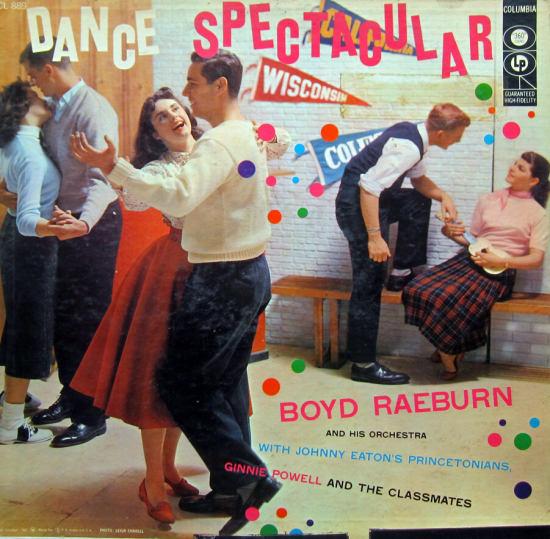
__________
It’s time for a open house party with Les Brown, with a host of invited singers, “the ideal guests for your evenings at home, with friends or strangers, for a party of two or a party of twenty—even for the listener alone.” This crowd looks too young for the likes of Hoagy Carmichael, but they’re very into their Les Brown albums. This photo is by Joe Weitz. Note the knotty pine paneling and mid-century bamboo furniture.
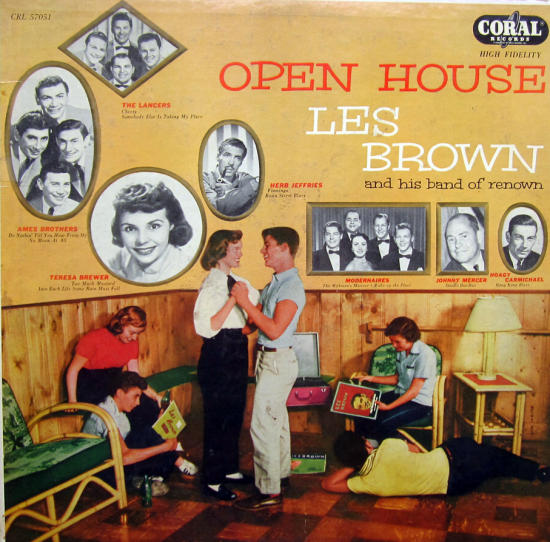
__________
Another party set in a basement room, this one with shag carpeting. I’d be a bit startled if Don Cornell showed up in my basement, but these teens are taking it in stride. As in the previous photo, the drink of choice is Coke.
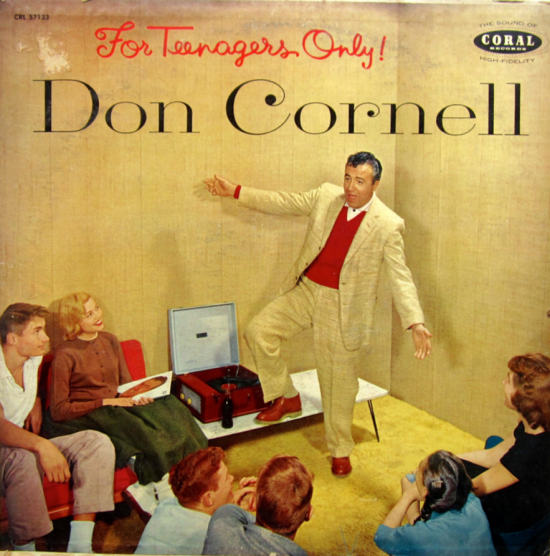
__________
Yes, there really were poodle skirts, if this photo is to be believed. And teenagers wore sport coats to the malt shop. Buddy Morrow was another big-band holdover trying to reach the youth market.
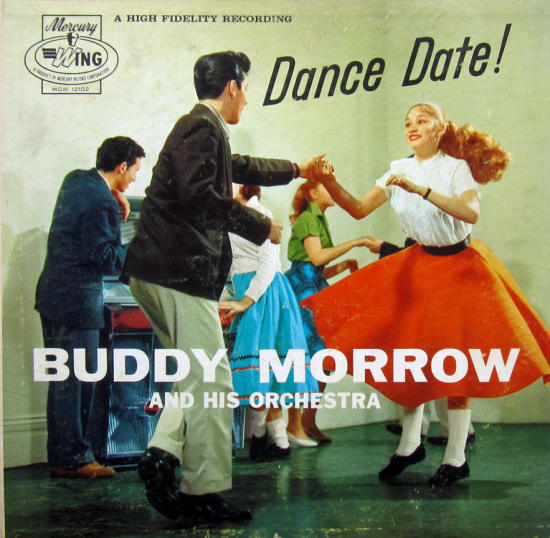
__________
“When the lettermen or campus Casanovas take comely co-eds around the waist…well, clearly the occasion’s a fraternity hop,” say the liner notes. Eddie Miller, the leader, was born in 1911, so it was perhaps a stretch for him to accompany a college party. The very happy couple at left seem old enough to be grad students. The lights and brick wall are great; one of the joke signs reads, “Halitosis is Better than No Breath at All.”
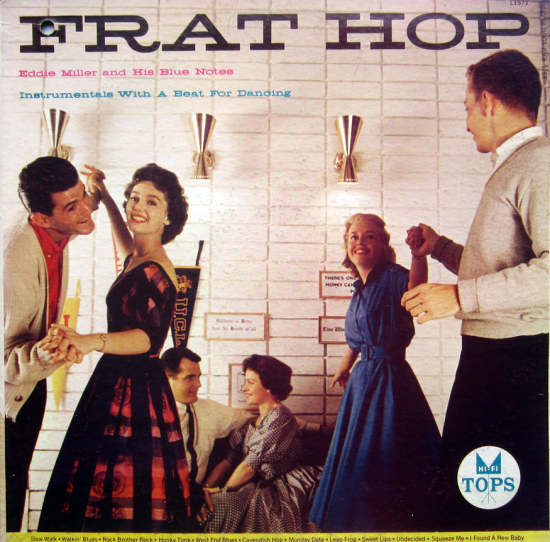
__________
These 1958 music fans are more believable as teenagers, though some of them are quite serious about their dancing. Apparently four inches below the knee was the skirt length of the day. At Sandy Nelson’s house party, the crowd is on the young side, and Mom has gone all out with the party decorations and snacks. I wonder if Brylcreem is still on the market?
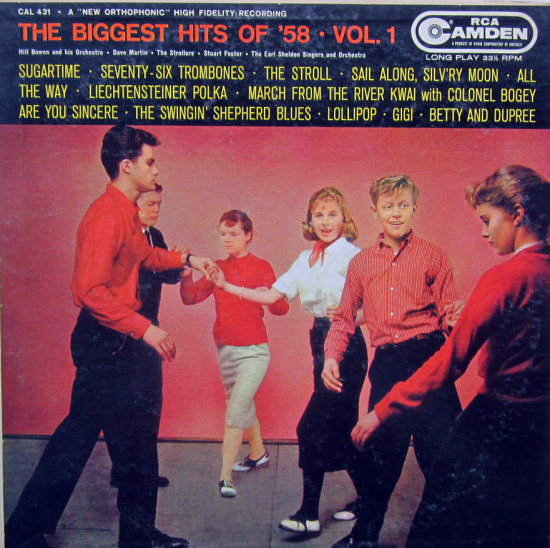
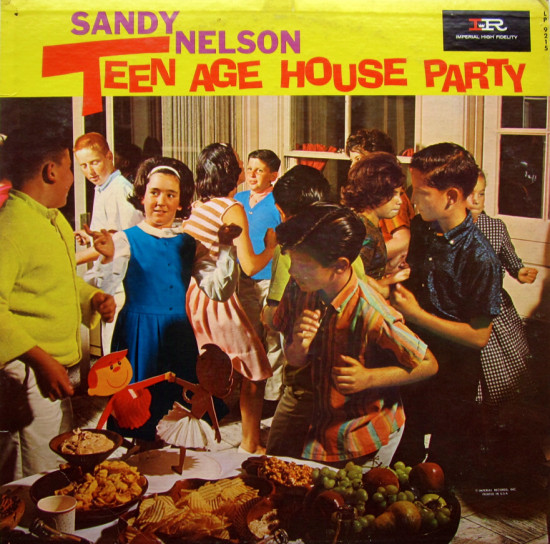
_________
In the Teen Scene photo the younger kids are loving Chet Atkins, supposedly “a favorite of Young America.” This cover is from 1963, as evidenced by the skinny ties and big hair.
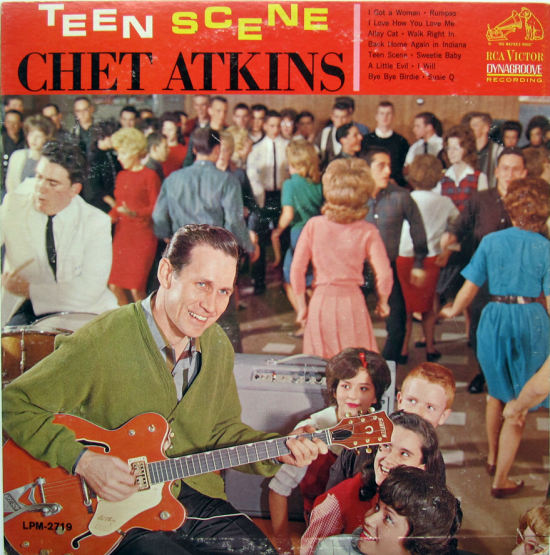
_________
These dancers actually are supposed to be adults won over to rock and roll by the Twist, but their dance party is very similar to the teen variety, complete with portable phonograph and soft drinks. There’s no obvious connection between the Twist and Dr. Pepper that I can see. The 10, 2, and 4 used to be on the label — those are the times of day when it’s fun to drink it. The second image, from the back, shows advanced variations of the Twist, including the never-seen Holdin’ Hands Twist.
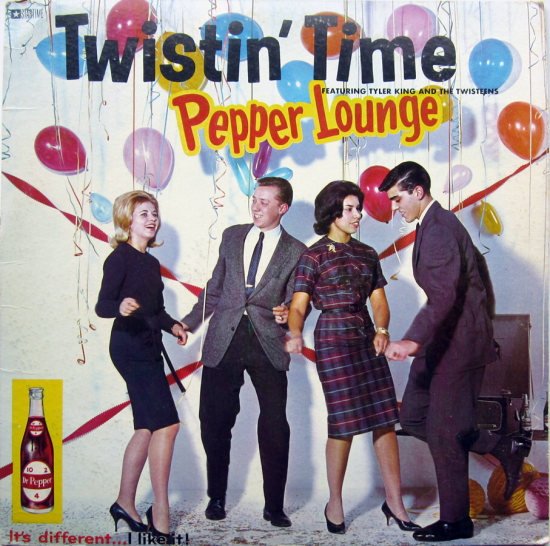
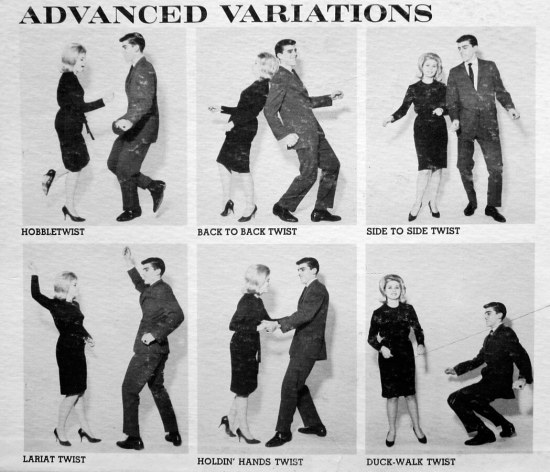
__________
And here is a dance party staged for the 1963 movie Bye Bye Birdie. These high schoolers are enjoying the “Telephone Hour” catching up on gossip (notice all the phones) while dancing. The costumes here are a Hollywood costumer’s idea of teen fashion. Some of the colors are very much of the time.
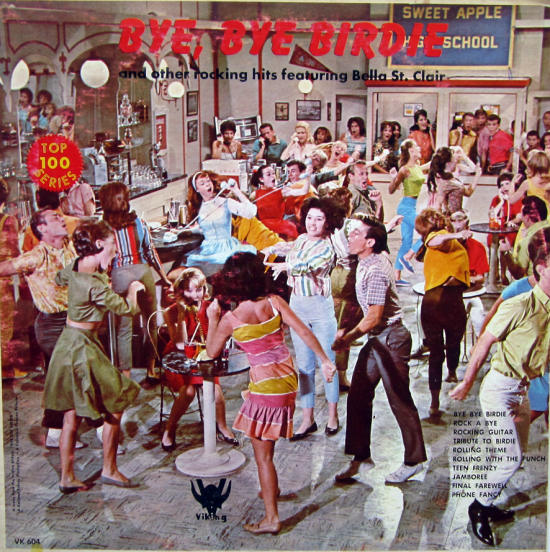
__________
In Volume 1 of “Cover Stories,” Paul shared his collection of covers by Alex Steinweiss, known as the father of the record album cover, and for many years in charge of Columbia Records’ art department.
Volume 2 focused on Columbia covers
Volume 3 featured jazz illustrations from the early years of the record album
Volume 4 revisited the 1950’s with images of fans holding and enjoying their albums
Volume 5 explored the work of Alex Steinweiss when he used the pseudonym “Piedra Blanca”







